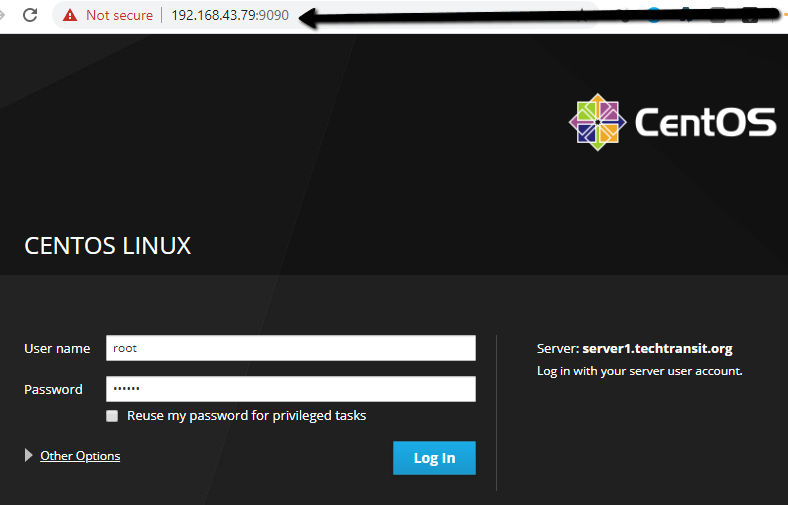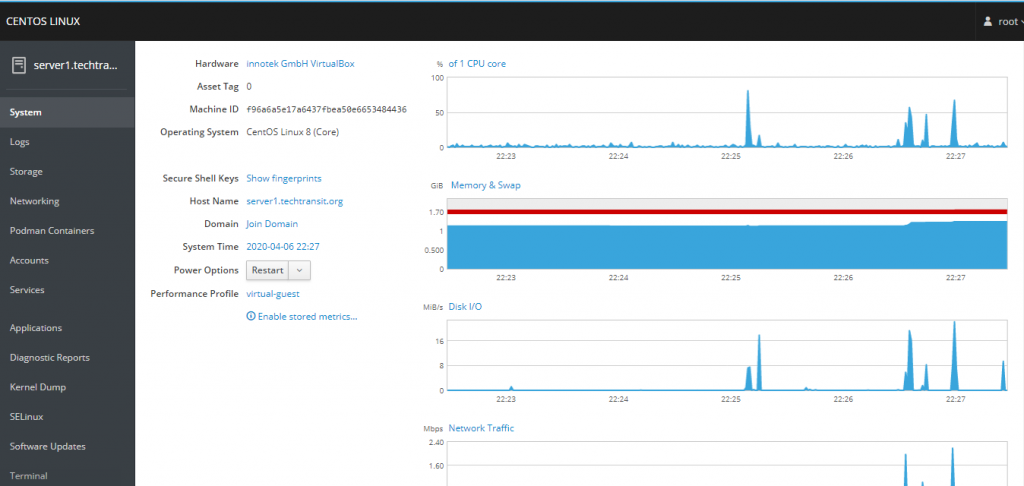Last Updated on 2 months by Sachin G
Keeping track of system performance, managing services, or rebooting a server remotely can be tricky from the command line. That’s why I decided to try the Cockpit web interface — a sleek, browser-based Linux server monitoring tool that promises easy and secure access to your system metrics and services.
The cockpit is a web console, an interactive management utility that can be able to manage local as well as remote server administration. It offers system statistics of the current time, we can troubleshoot all tasks that we were doing manually, like configuring SELinux, running commands from the terminal session, tuning system performance, etc. This utility uses a management tool. We can manage system services, virtual machines, containers, storage devices, and user management.
Here’s what happened when I tried to install Cockpit on Ubuntu 24.04 and other Linux distros.
Supported Operating System :
Cockpit package supports multiple operating systems, some of names are listed below.
(1) Fedora CoreOS (2) Red Hat ( RHEL ) (3) Atomic (4) CentOS Stream (5) Debian (6) Ubuntu (7) Clear Linux (8) Arch Linux (9) Alma Linux (10) SUSE Linux
How I Installed Cockpit on Ubuntu 24.04
Steps to Install Cockpit on Linux Servers:
Here I am adding both commands for RPM and Debian-based Operating systems. CentOS has its repository for package installation, so we will use the default provided repository for this utility to install.
Steps to Install Cockpit on Ubuntu 24.04
Before installing Cockpit, it’s important to ensure your system is up-to-date. Run the following commands:
sudo apt update
sudo apt upgrade -y
Cockpit is available in the default Ubuntu repositories starting with Ubuntu latest version . To install it, simply run:
sudo apt install cockpit -y
Installing Cockpit on Other Linux Distributions
CentOS/RHEL Fedora and AlmaLinux/Rocky Linux
Here we are going to search cockpit utility in the repository. This search command also showing utility other module and plugins, you can add more plugin or module , as you want to manage.
For CentOS/RHEL and AlmaLinux/Rocky Linux, may be you needed the Extra Packages for Enterprise Linux (EPEL) repository
sudo dnf search cockpit
Below are command to install utility , Generally Cockpit is already installed on the latest CentOs OS , but it is not active and Enabled for the boot time .
sudo dnf install cockpit -y
Enable and Start the Cockpit Service
Once installed, enable and start the Cockpit service using the following commands:
systemctl enable cockpit.socket systemctl start cockpit
Verify Cockpit Installation
To ensure that Cockpit is running, check its status:
sudo systemctl status cockpit.socket
Add the service of cockpit to open web console from outside our network.
firewall-cmd --permanent --zone=public --add-service=cockpit firewall-cmd --reload
Now you can open the web console of utility through browser , Use your the machine IP or hostname to access the web console.
https://host_or_ip:9090
Accept the self-signed certificate by adding it as an exception.

What Happened When I Tried Cockpit on Linux Mint and Fedora
I didn’t stop at Ubuntu. I also tested how to install Cockpit on Linux Mint and Fedora. The process was similar — Fedora even had Cockpit pre-installed in some cases. On Linux Mint, I had to first enable the backports repository, but once installed, it worked flawlessly.
In both cases, I was impressed by how user-friendly the server dashboard was. From checking system health to starting/stopping services, everything was accessible in a few clicks. It felt like a lightweight web-based admin panel without the overhead of cPanel or Webmin.
My Experience Using Cockpit Web Console on Ubuntu
When I set this up, I ran into a minor issue — my browser wouldn’t load the Cockpit page due to an SSL warning. That’s expected with self-signed certs. Once I added a security exception, the Cockpit Linux GUI loaded smoothly.
I particularly loved the real-time Linux metrics, like CPU usage, disk activity, and running services — perfect for basic remote server management.
We can do basic server administration tasks like reboot, shutdown, log, network configuration, performance and monitoring, and hardware information, etc, through the web console.

Why I Recommend Cockpit for Linux Admins
Based on my honest review, Cockpit is one of the most underrated Ubuntu server tools out there. It bridges the gap between CLI and GUI, making it ideal for:
New admins who aren’t comfortable with the terminal
Seasoned pros who want quick insights without SSH
Use cases where clients or junior staff need safe, limited access
if you manage multiple servers, Cockpit’s dashboard lets you monitor them all from one place — making it a surprisingly powerful remote server management solution.
FAQs – Questions Answered
Use this command:
sudo systemctl enable –now cockpit.socket
Absolutely. You can add other servers via the dashboard and monitor them in real time from a single interface.
Absolutely. You can add other servers via the dashboard and monitor them in real time from a single interface.

I’m Sachin Gupta — a freelance IT support specialist and founder of techtransit.org. I’m certified in Linux, Ansible, OpenShift (Red Hat), cPanel, and ITIL, with over 15 years of hands-on experience. I create beginner-friendly Linux tutorials, help with Ansible automation, and offer IT support on platforms like Upwork, Freelancer, and PeoplePerHour. Follow Tech Transit for practical tips, hosting guides, and real-world Linux expertise!

